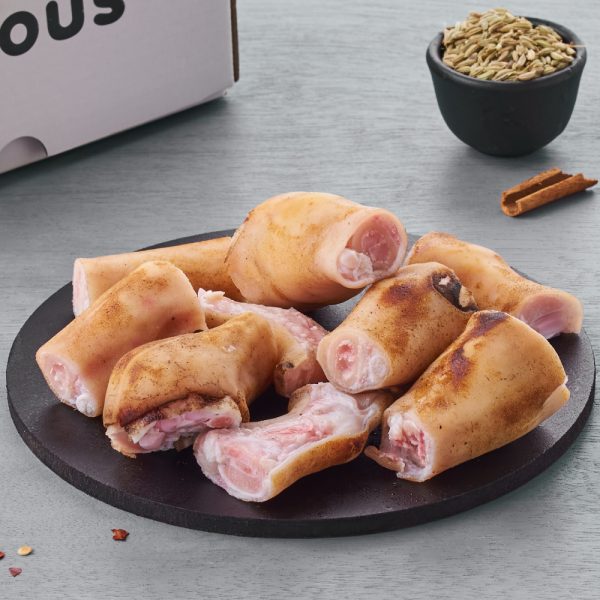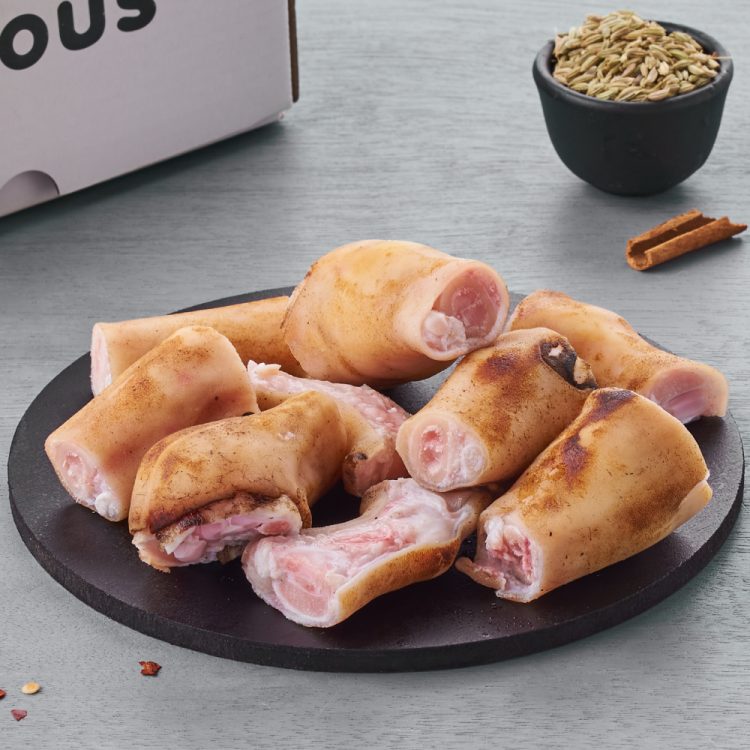For those of you who have indulged in the famous mutton paya, you would already know that the nutritional value of goat trotters is just as amazing as its taste. Especially when slow-cooked to perfection in an Indian or middle-eastern style, mutton trotters are a pure delight with rice, appam, parathas, or just on their own.
If you’re looking to buy Goat trotters online, or you want to know Goat trotters’ benefits or are typing “Goat trotters near me” on your phone, we have what you need.
Not only are our Mutton trotters carefully selected, cleaned and packed, but you can get them home-delivered quickly by placing your order online in just a few clicks.
We also feature a vast selection of goat meat online on our website. Simply put, we are dedicated to providing only the best.
Goat trotters are a whole new ball game, and it’s all because of goat trotters’ nutritional value. If you’re looking to buy Goat trotters online, here’s even more reason to do so.
Goat Trotters Nutritional Value
Apart from protein and fats, mutton trotters also contain calcium, potassium, magnesium, vitamins, and other elements in the broth and bone marrow. Especially when you prepare hot mutton paya, the ingredients mix up for a rich indulgence loaded with goat trotters’ nutritional value.
In addition, trotters are a rich source of Omega-3 fatty acids and Omega-6 fatty acids, as well as Vitamin K, A, and selenium. This combination is said to be good for heart, bone and nerve health.
Mutton Paya: Goat Trotters Recipe
Now that you know the basic Goat trotters benefits let’s look at the taste that has rocked the world for generations – mutton paya soup or gravy.
An exotic goat trotters recipe, this soupy curry is made with special spices and simmering fresh goat trotters. If you love sucking the marrow of Mutton Nihari – Authentic Nalli Nihari Recipe, you’d find the trotters an insatiable meal experience.
Mutton trotters cooked to paya perfection tastes best with steamed rice, naan, bread, or even your favourite appams. You can make mutton trotters for a delicious paya in a pressure cooker too!
The tender meat coming off the bone, slow-cooked to perfection, and juicy marrow make this dish a wholesome culinary delight.
Traditionally slow-cooked, the Goat trotters for a mutton paya recipe can also be made in an instant pot style. Here’s how.

| Prep Time | 30 minutes |
| Servings |
people
|
Ingredients
|
   |
- Take a vessel/pot filled with water, add 1 tsp ginger garlic paste, 1 tsp turmeric powder, and throw in the mutton trotters. Let it simmer for 6-7 minutes. Drain and set the trotters aside.
- Add boiled mutton trotters, chillies, sliced onions, salt, and ginger garlic paste into your instant pot or pressure cooker. Top it off with just enough water to cover the morsels.
- Close your cooker/pot’s lid and set on medium-high flame for 1 hour.
- Take your cooked goat trotters out of the broth and set them aside in a bowl. Keep the broth in the pot. Take out as much onion as you can from the broth, which will be useful for the bhuna masala preparation.
- Take a pan over medium flame, add oil, and saute onions till they become translucent and soft. Add your mutton paya masala, Kashmiri red chilli powder, red chilli powder, and stir till the oil begins to separate from the mixture. Throw in the boiled onions from step 4 and stir fry for one more minute. Lower the heat and add your yoghurt.
- Combine your special Mutton paya masala with the broth you preserved in step 4, mixing it well for a consistent gravy.
- Chuck in your cooked mutton trotters from step 4 and simmer in the broth at medium flame for 8-10 minutes. Viola!
Your delicious mutton paya dish is ready to serve with your favourite bread, rice, or appam.
What are you waiting for? Try this recipe out.
If you enjoy this dish, we’d love to see it. Click a few photos and share them on Instagram with #MadeWithLicious. Let us know the comments if you enjoyed this read.

